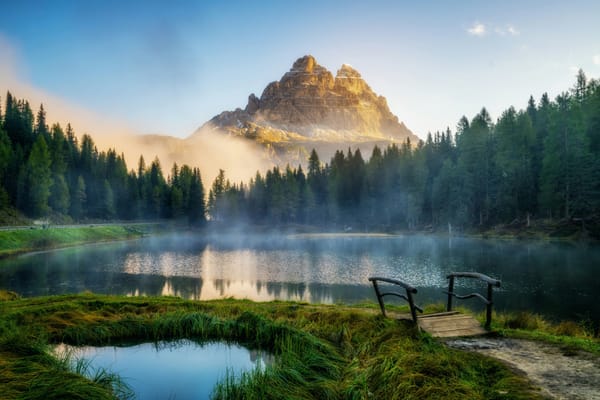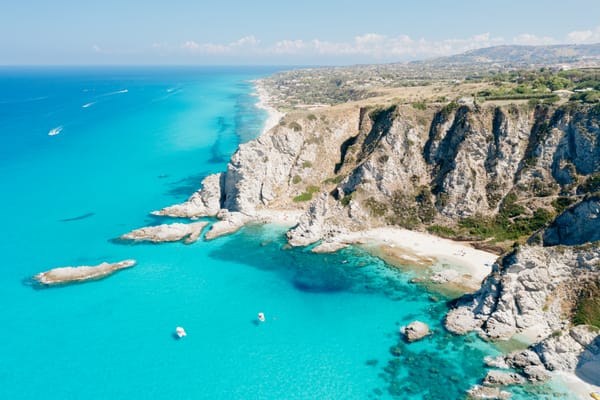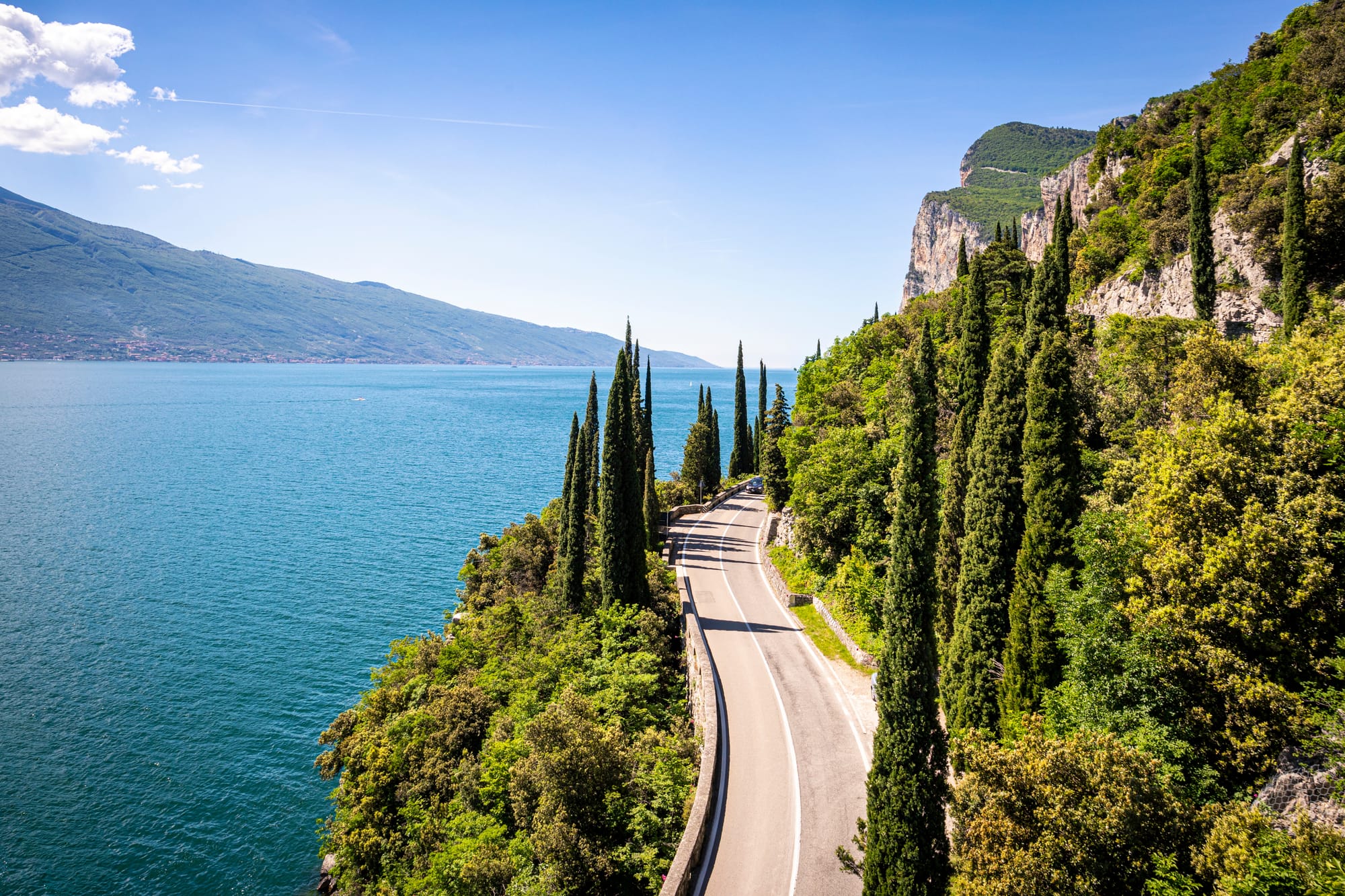An Italian journey is often imagined through a series of static, perfect images: the Colosseum standing silent against a Roman sky, a gondola gliding through the quiet canals of Venice, the magnificent Duomo of Florence piercing the heavens.
These are iconic moments, yet they represent only a fraction of the country's story. To truly understand Italy, to feel its rhythm and grasp its soul, one must experience it in motion. This is where the humble road trip transforms from a simple mode of transport into a profound narrative tool. It’s about the visceral connection to the landscape, the freedom to follow a winding cypress-lined lane to a forgotten hilltop town, to pause at a cliffside vista over the shimmering Mediterranean for as long as the heart desires, and to personally discover the threads of history, culture, and cuisine that weave the country together.
This guide is a curated collection of the most beautiful roads in Italy, each offering a unique chapter in the grand story of the Italian landscape. A journey by car here is an invitation to engage all the senses: the scent of lemon groves on the Amalfi Coast, the taste of a freshly pressed olive oil at a Tuscan farmhouse, the sound of cowbells echoing in a Dolomite valley. From the staggering alpine passes of the north to the sun-drenched coastal routes of the south, these are the drives that transform a vacation into a timeless adventure.
Why explore Italy by car?
Choosing a road trip in Italy is an intentional decision to embrace spontaneity and depth. It offers unparalleled freedom to escape the rigid schedules of train travel and the concentrated crowds of major tourist hubs. It’s the ability to stop for an impromptu picnic in an Umbrian olive grove, to spend an extra hour at a family-run winery in Chianti after a captivating conversation with the owner, or to discover a secluded beach in Puglia known only to locals. Driving allows for a direct, unfiltered connection with the land itself—its changing topography, its shifting light, and the authentic rhythm of life in its small towns and villages.
It turns the traveler from a spectator into an active participant in the Italian panorama. Here are some ideas for the most beautiful scenic roads in Italy: they should be seen as starting points, not rigid prescriptions.
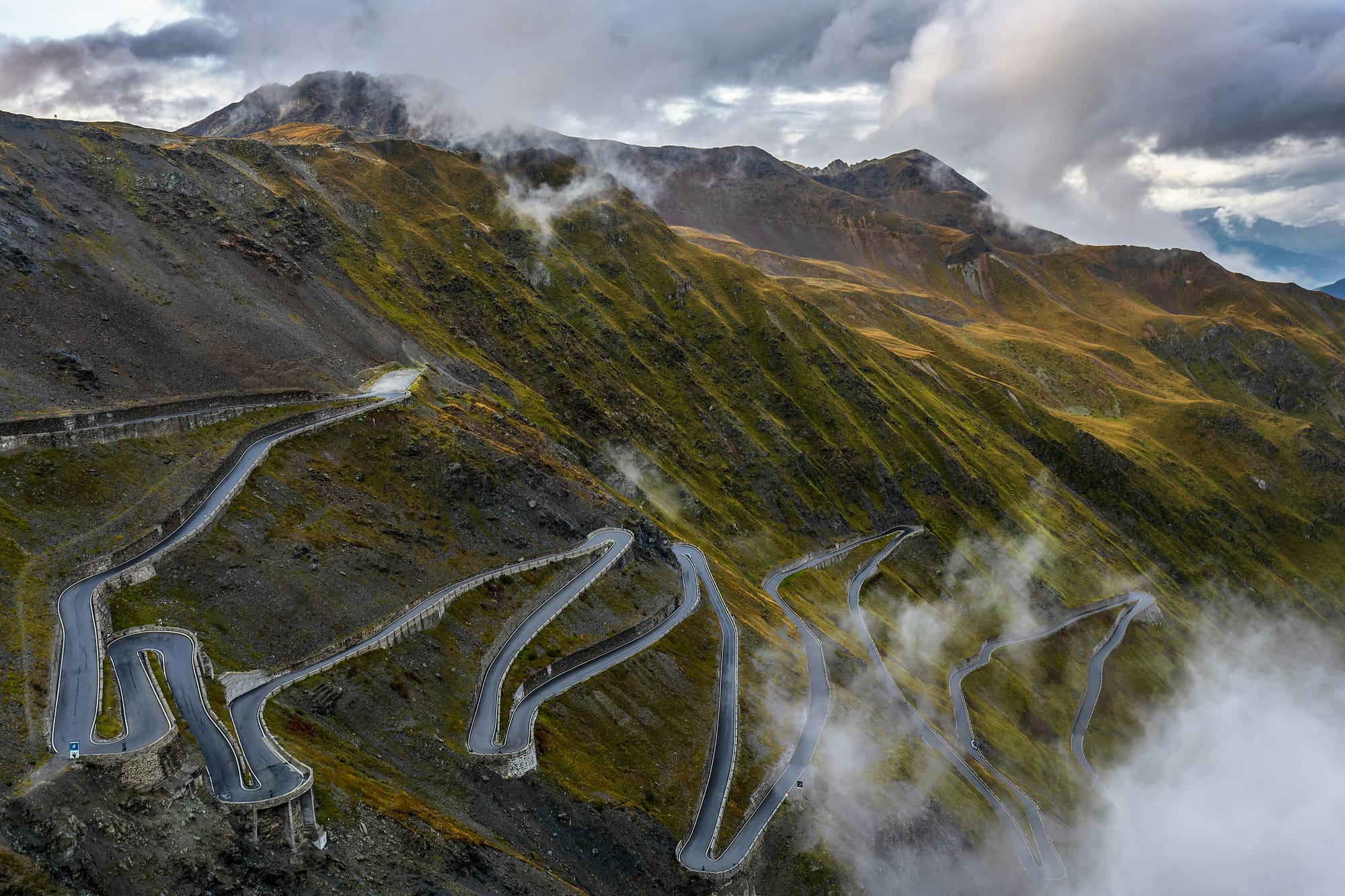
The great northern routes: from alpine peaks to legendary lakes
The north of Italy offers a stunning diversity of landscapes. It's a region of vertical drama in the Alps and Dolomites, of serene glamour on the shores of its famous lakes, and of gastronomic excellence in the rolling hills of Piedmont.
1. The Great Dolomites Road (Grande Strada delle Dolomiti - SS48)
- Route: From Bolzano to Cortina d'Ampezzo.
- Distance: Approximately 110 km (about 68 miles).
- Best For: Mountain lovers, photographers, hikers, and geology enthusiasts.
- The Experience: This is arguably Europe’s most breathtaking mountain drive. The route carves a path through the heart of the Dolomites, a UNESCO World Heritage site famed for its unique, pale-colored carbonate rock that blushes pink and orange at sunrise and sunset—a phenomenon known as Enrosadira. The road twists and turns,ascending to high-altitude passes and descending into verdant valleys, with jagged peaks like the Rosengarten,Marmolada, and Tofane serving as a constant, magnificent backdrop.
- Key Stops & Detours:
- Lago di Carezza: A stunning alpine lake known for its emerald waters reflecting the Latemar peaks. Legend says the colors come from a rainbow shattered by a sorcerer.
- Passo Pordoi: At 2,239 meters (7,346 feet), it offers a cable car ride up to Sass Pordoi for a 360-degree panoramic "Terrace of the Dolomites."
- Passo Falzarego: A historically significant pass with open-air museums dedicated to World War I history,and trails leading through trenches and fortifications.
- Cortina d'Ampezzo: A chic and historic alpine resort town, perfect as a base for exploring the surrounding mountains.
- Traveler’s Notebook: The road is generally open from late May to October, but always check conditions as weather can be unpredictable. The drive requires confident handling of mountain roads but is well-maintained.Allocate a full day to savor the views and stops.
2. The Stelvio Pass (Passo dello Stelvio - SS38)
- Route: From Prato allo Stelvio to Bormio.
- Distance: Approximately 49 km (about 30 miles).
- Best For: Driving purists, motorcyclists, and those seeking a legendary challenge.
- The Experience: The Stelvio Pass is not just a road; it's a motoring icon. Famous for its 48 hairpin turns on the northern ramp, it is one of the highest paved mountain passes in the Alps. The ascent is a relentless, dizzying ballet of switchbacks, a testament to early 19th-century engineering. The landscape is stark, raw, and high-alpine.Reaching the summit at 2,757 meters (9,045 feet) feels like a true accomplishment, offering immense views and a palpable sense of history.
- Key Stops & Detours:
- The Switchbacks Viewpoint: The iconic viewpoint looking down on the seemingly impossible stack of turns is a mandatory photo stop.
- Bormio: A charming spa town at the base of the pass, ideal for relaxing in its thermal baths after the intense drive.
- Stelvio National Park: The pass is the centerpiece of Italy's largest national park, offering countless opportunities for hiking and wildlife spotting.
- Traveler’s Notebook: The Stelvio is open only from June to September. This is a highly technical and demanding drive, often crowded with cyclists and motorcyclists. It is not for the faint of heart or the inexperienced driver.Drive it early in the morning on a weekday to avoid the heaviest traffic.
3. Lake Como's Western Shore (Strada Regina - SS340)
- Route: From Como to Menaggio.
- Distance: Approximately 35 km (about 22 miles).
- Best For: Romantics, garden enthusiasts, and seekers of classic lakeside glamour.
- The Experience: The historic "Strada Regina" hugs the western shore of Lake Como, offering a cinematic journey past opulent villas, lush botanical gardens, and charming lakeside towns. Tunnels carved from rock open dramatically to brilliant blue lake views. The road is a parade of Belle Époque hotels and grand estates, with the scent of jasmine wafting from perfectly manicured gardens. It’s a drive that epitomizes Italian elegance, where every curve reveals a scene worthy of a postcard.
- Key Stops & Detours:
- Cernobbio: Home to the magnificent Villa d'Este, now a world-renowned luxury hotel with spectacular Renaissance gardens.
- Tremezzo: A required stop to visit Villa Carlotta, a museum and botanical garden famous for its Canova sculptures and blooming azaleas in the spring.
- Villa del Balbianello: A breathtaking villa on a wooded promontory, famous as a location for films like Casino Royale. Best reached via a short water taxi from Lenno.
- Menaggio: A lively town with a lovely lakefront promenade and the main ferry terminal, providing easy access to Bellagio and Varenna.
- Traveler’s Notebook: This road is narrow and can be heavily congested, especially on summer weekends. Parking in the villages is limited and challenging. Consider using the efficient ferry system to hop between towns for a more relaxing experience.
- Check out all the details about Lake Como → Read our "The ultimate guide to Lake Como: what to see, do and know"
4.The Gardesana Road (Strada Statale 45bis & 249)
- Route: The full circumnavigation of Lake Garda, with a focus on the most dramatic western shore (Gardesana Occidentale - SS45bis) from Salò to Riva del Garda.
- Distance: Approximately 50 km (about 31 miles) for the western shore; 145 km (about 90 miles) for the full lake loop.
- Best For: Driving enthusiasts, lovers of dramatic lakeside scenery, and travelers seeking a mix of thrilling tunnels and charming towns.
- The Experience: The Gardesana, particularly its western shore, is a masterpiece of engineering and a pure thrill to drive. The road, often carved directly into the sheer cliffs, clings precariously to the mountainside as it snakes along Italy's largest lake. The experience is a captivating rhythm of darkness and light; you plunge into dozens of rock-hewn tunnels, some short and rustic, others long and modern, only to emerge moments later into the brilliant, blinding blue of the lake and sky. With the sheer rock face on one side and a steep drop to the crystalline water on the other, this drive delivers a constant sense of drama and awe, famously captured in the opening chase scene of the James Bond film Quantum of Solace.
- Key Stops & Detours:
- Gardone Riviera: This elegant town is home to the Vittoriale degli Italiani, the eccentric and grandiose former estate of poet Gabriele D'Annunzio, a fascinating complex of museums, gardens, and even a warship set into the hillside.
- Limone sul Garda: An impossibly picturesque village that seems to defy gravity, clinging to the cliffs. It is famous for its historic lemon groves (limonaie), some of which are open to the public, and its charming, steep-stepped alleyways.
- Riva del Garda: Located at the northernmost tip of the lake and surrounded by towering mountains, this vibrant town has a distinctly Austrian feel. Its waterfront is dominated by a medieval fortress (the Rocca) and is a world-renowned hub for windsurfing and sailing.
- Traveler’s Notebook: The Gardesana Occidentale is famous for its many tunnels, which can be narrow and require caution. Driving from south to north keeps the lake on your right, offering passengers the best views. The road can be extremely congested during peak summer months (July and August) and on weekends, so an early start is highly recommended. For a full-day experience, completing the entire loop around the lake combines the western shore's drama with the gentler, vine-and-olive-clad hills of the eastern shore (Gardesana Orientale - SR249), passing through charming towns like Bardolino and Lazise.
5. The Barolo Wine Road (Strada del Barolo)
- Route: A loop through the Langhe hills, starting from Alba or Barolo.
- Distance: Approximately 80 km (about 50 miles) for a comprehensive loop.
- Best For: Oenophiles, gourmands, and lovers of cultivated, vineyard landscapes.
- The Experience: This route winds through the prestigious UNESCO World Heritage landscape of the Langhe. The hills here are a geometric marvel, meticulously planted with the Nebbiolo grape. The drive takes you through a sea of vineyards, connecting medieval hilltop towns and imposing castles, each lending its name to world-famous wines. In the autumn mornings, a thick fog (nebbia) settles in the valleys, giving the noble grape its name and adding a mystical quality to the drive.
- Key Stops & Detours:
- Barolo: The town that gives the "king of wines" its name, centered around the Falletti Castle which houses the innovative WiMu (Wine Museum).
- La Morra: Known as the "Balcony of the Langhe," its Belvedere viewpoint offers the most stunning panoramic view of the entire region.
- Monforte d'Alba: A beautifully preserved medieval village with a vibrant cultural scene and a natural open-air amphitheater.
- Alba: The gastronomic capital of the region, essential for its International White Truffle Fair (in autumn) and high-end food shops.
- Traveler’s Notebook: Autumn is the most spectacular time to visit, but also the busiest. Book winery tours,tastings, and restaurant reservations well in advance, as many are small, family-run establishments with limited space.
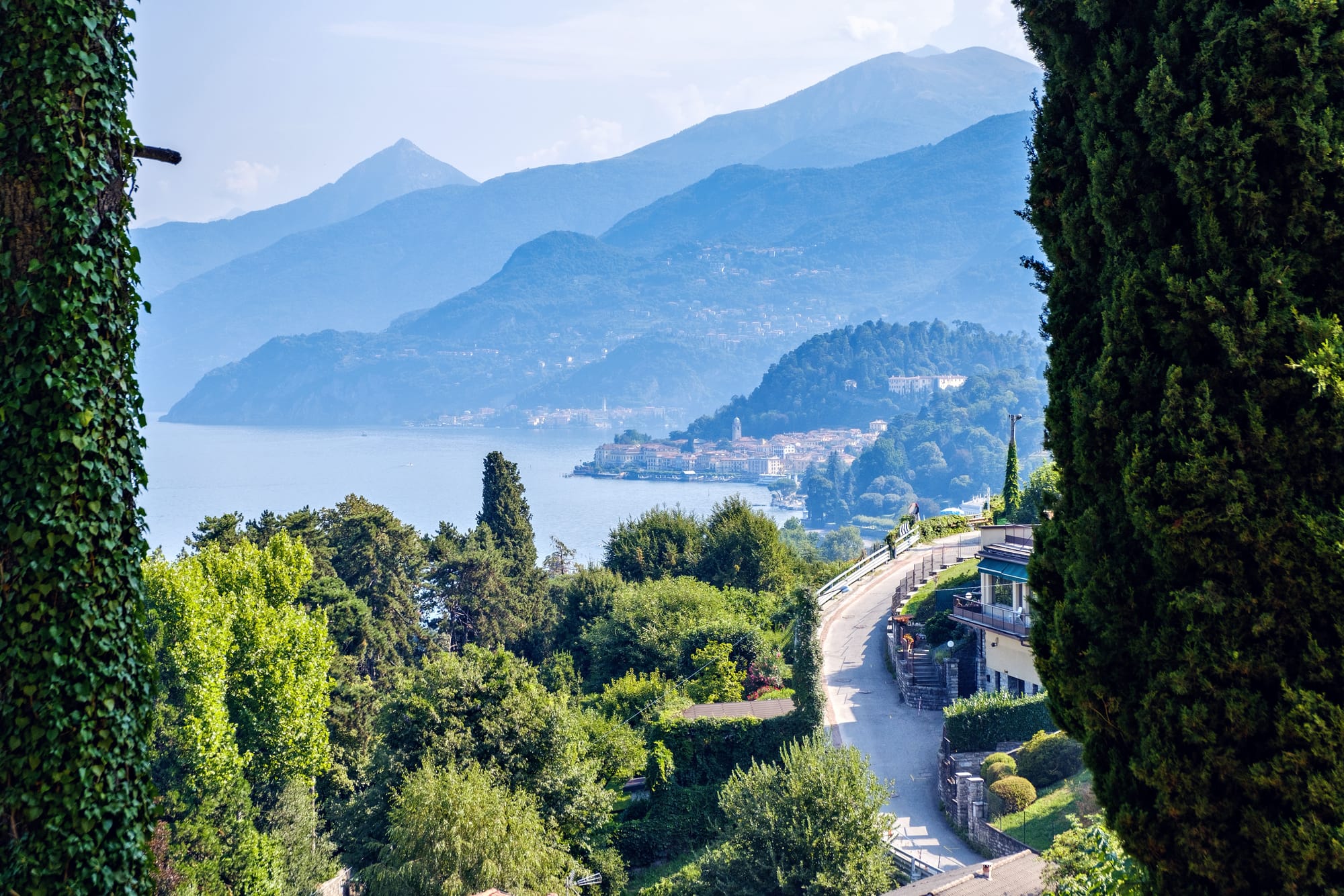
The heart of Italy: Renaissance landscapes and wild nature
Central Italy offers a poetic driving experience, from the iconic rolling hills of Tuscany to the wild, untamed Apennine mountains of Abruzzo.
6. The Chianti Wine Road (Via Chiantigiana - SR222)
- Route: From Florence to Siena.
- Distance: Approximately 72 km (about 45 miles).
- Best For: Wine connoisseurs, foodies, and lovers of classic pastoral scenery.
- The Experience: The SR222 is the quintessential Tuscan drive. It meanders through the heart of the Chianti Classico wine region, connecting its two historic capitals. The road is a tapestry of rolling hills draped in vineyards, silver-green olive groves, and dotted with stone farmhouses and medieval hamlets. The pace is slow, inviting frequent stops at wineries for tastings, local trattorias for rustic meals, and viewpoints that seem lifted directly from a Renaissance painting.
- Key Stops & Detours:
- Greve in Chianti: Often considered the unofficial capital of the region, with its unique triangular piazza and excellent wine shops.
- Panzano: Home to the famous butcher Dario Cecchini and offering splendid views over the Conca d'Oro (Golden Basin).
- Castellina in Chianti: A fortified medieval town with an impressive fortress and a charming historic center.
- Wineries: Look for the Gallo Nero (Black Rooster) seal, the symbol of the Chianti Classico consortium. Many estates offer tours and tastings.
- Traveler’s Notebook: Best driven in spring or fall to avoid summer crowds and enjoy pleasant weather. While the main SR222 is straightforward, don't hesitate to explore the smaller white roads (strade bianche) that lead to hidden gems.
7. The Val d'Orcia Loop (SP146 & connecting roads)
- Route: A scenic loop connecting Pienza, San Quirico d'Orcia, and Montalcino.
- Distance: Approximately 60 km (about 37 miles).
- Best For: Photographers, romantics, and seekers of iconic Tuscan landscapes.
- The Experience: If the Chiantigiana is the heart of Tuscan wine, the Val d'Orcia is its soul. This UNESCO World Heritage landscape is defined by its vast, undulating hills, often bare save for a solitary cluster of cypress trees or a perfectly preserved farmhouse. The drive, particularly along the SP146 between Pienza and San Quirico, is visually stunning at every turn. It’s a meditative journey through a landscape that feels both timeless and profoundly peaceful.
- Key Stops & Detours:
- Pienza: The "ideal" Renaissance town, designed by Pope Pius II, offering incredible pecorino cheese and stunning views over the valley.
- Chapel of Our Lady of Vitaleta: The iconic, solitary chapel framed by cypresses, one of Tuscany's most photographed spots.
- San Quirico d'Orcia: A charming small town with the beautiful Horti Leonini gardens.
- Bagno Vignoni: A unique village where the main square is a large thermal pool of steaming water.
- Traveler’s Notebook: The light is most magical in the early morning and late afternoon (the "golden hour"). This area is best explored over a couple of days to fully appreciate its serene beauty.
- From the rolling hills of Chianti to its world-famous art cities, Tuscany is a world of its own → Discover all its secrets with our in-depth guide "The essential guide to Tuscany: what to see, do and eat".
8. The Road to Campo Imperatore (SS17bis)
- Route: From Santo Stefano di Sessanio up to the Campo Imperatore plateau.
- Distance: Approximately 30 km (about 19 miles).
- Best For: Adventurous travelers, hikers, and those seeking vast, empty landscapes.
- The Experience: A world away from Tuscany, this road in Abruzzo climbs into the heart of the Gran Sasso National Park, culminating in the vast highland plateau of Campo Imperatore. Known as Italy's "Little Tibet," the landscape is stark, wide-open, and breathtaking, surrounded by the highest peaks of the Apennines. It’s a place of profound silence and wild beauty, where herds of horses and cattle roam free, and the sense of scale is awe-inspiring.
- Key Stops & Detours:
- Santo Stefano di Sessanio: A beautifully preserved medieval village, now a unique "albergo diffuso" (scattered hotel), that feels like stepping back in time.
- Rocca Calascio: A short detour leads to one of Italy's highest and most evocative fortresses, a dramatic ruin used as a location for films like Ladyhawke.
- Ristoro Mucciante: On the plateau, this famous butcher shop allows you to buy fresh arrosticini (lamb skewers) and grill them yourself on communal barbecues.
- Traveler’s Notebook: This is a high-altitude road, typically open from May to November. The weather can change rapidly, so bring layers even in summer. Services on the plateau are minimal, adding to the feeling of remote adventure.

The dramatic south: sun-drenched coasts & ancient secrets
Southern Italy delivers drives of intense color and drama, from glamorous cliffside roads to routes that trace millennia of history.
9. The Amalfi Coast Drive (Strada Statale 163 Amalfitana)
- Route: From Sorrento to Salerno (or Vietri sul Mare).
- Distance: Approximately 50 km (about 31 miles).
- Best For: Lovers of dramatic coastal scenery, luxury travelers, and those with a steady nerve.
- The Experience: This is the superstar of scenic drives, a 50-kilometer stretch of road carved into the side of a cliff, offering jaw-dropping views of the Tyrrhenian Sea. The SS163 twists and turns, passing through pastel-colored villages that seem to tumble down the cliffs to the sea. The scent of lemon groves fills the air, and every bend reveals a new, spectacular vista of hidden coves, terraced gardens, and opulent villas.
- Key Stops & Detours:
- Positano: The impossibly picturesque vertical town, with its steep, narrow streets, chic boutiques, and cascade of colorful houses.
- Amalfi: The historic maritime republic with its magnificent Arab-Norman cathedral and charming paper museum.
- Ravello: Perched high above the sea, it offers the most sublime views from the gardens of Villa Rufolo and Villa Cimbrone.
- Traveler’s Notebook: This road is not for the timid. It is extremely narrow, winding, and heavily congested, especially from June to August. For a more relaxed experience, consider traveling in the shoulder seasons (April-May or September-October), hiring a private driver, or using the SITA bus service.
- To discover every secret of this paradise overlooking the sea → Learn more with our "The ultimate guide to the Amalfi Coast: what to see, do and know"
10. The Salento Coastal Road (SP358 & SP86)
- Route: From Otranto to Santa Maria di Leuca in Puglia.
- Distance: Approximately 55 km (about 34 miles).
- Best For: Explorers seeking a less-crowded coastal drive, swimmers, and lovers of wild, rugged beauty.
- The Experience: For a different kind of southern coastal magic, the Adriatic coast of Puglia's Salento peninsula offers a wilder, more authentic experience. The road south from Otranto is a dramatic mix of sheer cliffs, hidden sea caves, and ancient watchtowers. The color of the water is an intense, almost unreal shade of turquoise. The route culminates at Santa Maria di Leuca, the "heel" of Italy, where the Adriatic and Ionian seas meet.
- Key Stops & Detours:
- Otranto: A beautiful fortified port town with a stunning cathedral known for its 12th-century mosaic floor.
- Ponte Ciolo: A dramatic fjord-like inlet spanned by a bridge, a popular spot for brave cliff divers and swimmers.
- Grotta Zinzulusa: A spectacular sea cave filled with stalactites and stalagmites, accessible for guided tours.
- Santa Maria di Leuca: The end of the land, marked by its iconic lighthouse and sanctuary, offering expansive views of the two seas merging.
- Traveler’s Notebook: This drive is far less congested than the Amalfi Coast, even in high season. The roads are generally in good condition. Pack a swimsuit, as there are countless opportunities to stop for a swim in the crystal-clear waters.
11. The Western Sicily Salt Route (Via del Sale - SP21)
- Route: From Trapani to Marsala.
- Distance: Approximately 30 km (about 19 miles).
- Best For: History buffs, photographers, and those interested in unique cultural landscapes.
- The Experience: This unique coastal drive takes you through the otherworldly landscape of the Stagnone Nature Reserve. The road runs alongside ancient salt pans that have been harvested for millennia, creating a shimmering mosaic of shallow pools that change color with the light. Historic windmills, some restored and operational, dot the horizon, their sails turning slowly in the sea breeze. It's a serene, almost surreal landscape that speaks of an ancient relationship between humans and the sea.
- Key Stops & Detours:
- Salt Pans of Nubia: Visit the Salt Museum housed in an old mill to understand the traditional harvesting process and see the mountains of freshly collected salt.
- Island of Mozia (Mothya): Take a short ferry ride across the shallow lagoon to explore the ruins of an ancient Phoenician city on this small island.
- Marsala: The route culminates in this historic city, famous for its eponymous fortified wine. Visit one of the historic cellars like Florio or Pellegrino for a tour and tasting.
- Traveler’s Notebook: The golden hour just before sunset is absolutely the best time for this drive. The light reflects off the water in the salt pans, creating a spectacular display of pink, orange, and gold. The route is flat and easy to drive.

Planning your Italian road trip: practical advice
A successful road trip in Italy is born from good planning.
- Choosing Your Vehicle: Smaller is almost always better. The charm of Italy lies in its narrow village streets and winding country lanes, where a compact car is a blessing. An automatic transmission is recommended for those not comfortable with manual gearboxes, especially on steep hills and in traffic.
- Navigating the Rules:
- ZTL (Zona a Traffico Limitato): Be acutely aware of these "Limited Traffic Zones" in the historic centers of almost all towns and cities. Unauthorized entry results in heavy fines. Look for the signs and park outside the designated area.
- Autostrada: These are the toll highways, efficient for covering long distances. Payment can be made with cash, cards, or a Telepass.
- Speed Limits: Pay close attention to posted limits, as speed cameras (Autovelox) are common.
- Best Time to Travel: The shoulder seasons of spring (April-June) and autumn (September-October) offer the best balance of pleasant weather, fewer crowds, and more manageable driving conditions.
- From the snowy Alps to sunny beaches, every season in Italy offers a unique experience → Discover the perfect time for your trip with our in-depth guide "The ultimate guide to Italy's seasons".
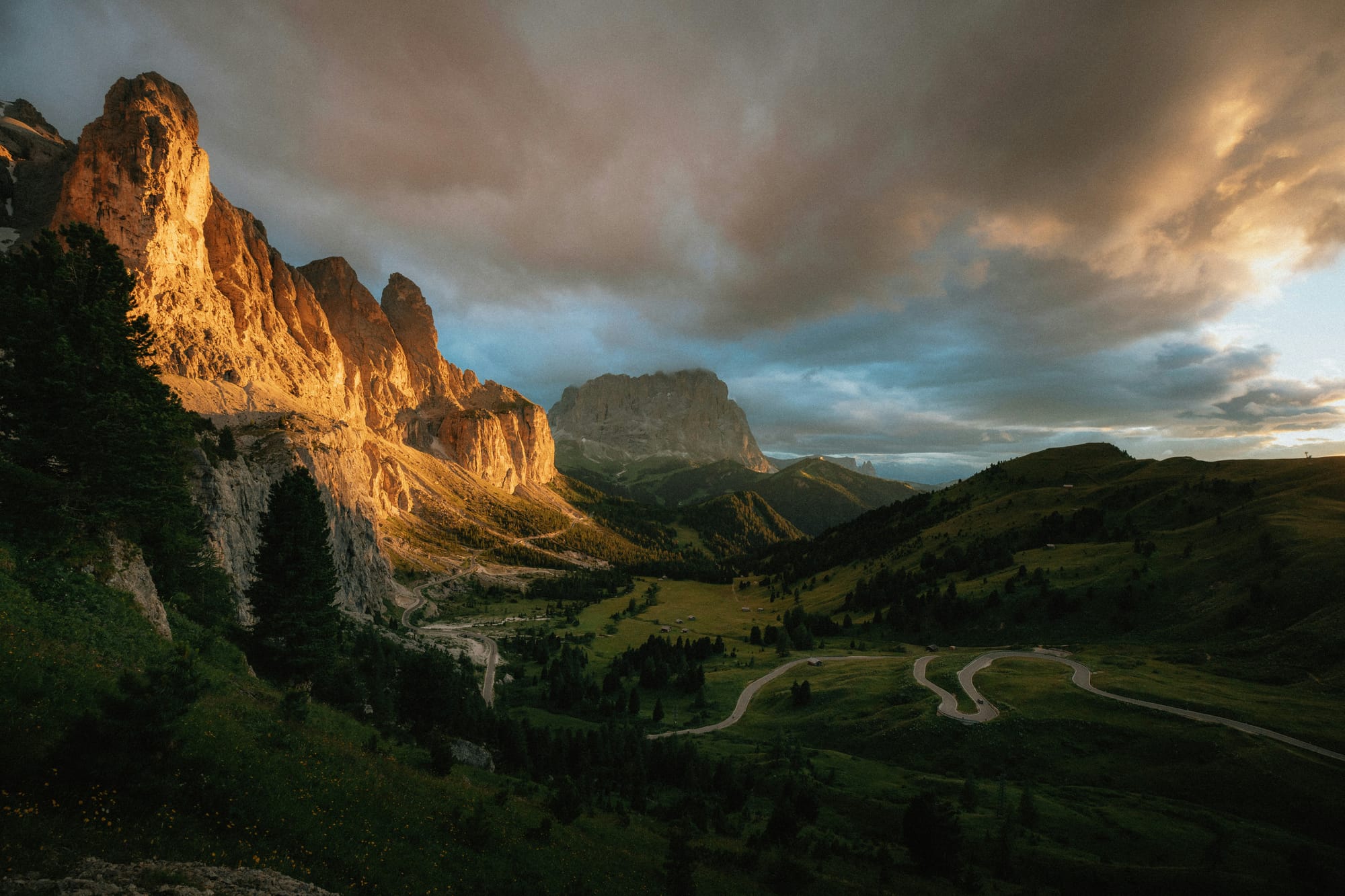
The true, unscripted magic of an Italian road trip is found in the spontaneous detours: the small road that leads to a family-run trattoria with no menu, the sign for a local festival that leads to an evening of unexpected celebration, the quiet hilltop that offers a moment of perfect solitude. These roads are an invitation to slow down, to look closer, and to create a personal, unforgettable story of discovery—a story that is uniquely and authentically your own.
Continue your journey into the heart of Italy. Uncover a world of experiences in the Bel Paese with our complete travel guides.
